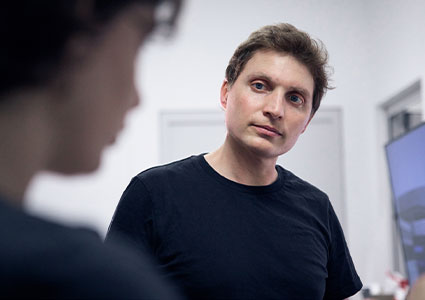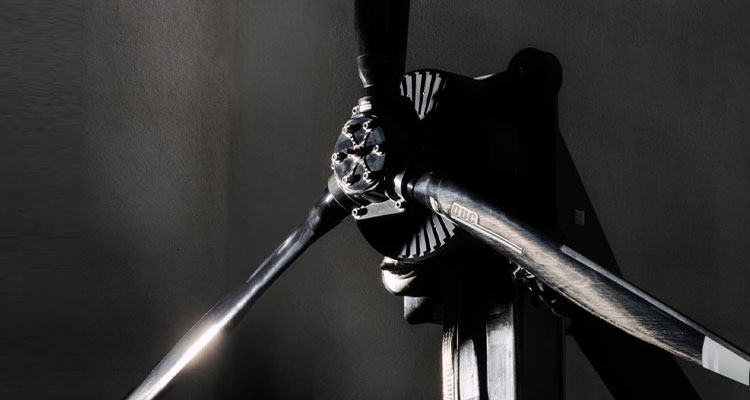Decarbonizing air transport: Jean-Christophe Lambert of Ascendance welcomes you on board the long-haul flight to cleaner connections
To begin, could you provide details of your career history and how you came to co-found Ascendance?
I’ve been working in and around aviation throughout my whole career. After spending almost eight years at Airbus, the last three years of which I led its E-Fan project, I left the business after the project was shelved. By this point, I’d seen the limitations of all-battery technologies when it came to its potential to decarbonize aviation and – along with my founding team who were also all at Airbus – made the bold decision to go all-in on hybrid-electric technologies and create Ascendance.

How do you see startups playing a crucial role in breaking through the limitations faced by major aircraft manufacturers and airlines?
Major players like Airbus (European), Boeing (American) and Comac (Chinese), and their respective ecosystems, are working hard to achieve the Holy Grail of the net-zero aircraft. But, constrained by heavy legacy, aircraft manufacturers are struggling to engage in disruptive innovations. Without allowing disruption from new technologies, net-zero air travel will not be possible.
Breakthroughs in sustainable aviation depend on new skills and tech – such as hybrid-electric technology or hydrogen – that are new to everyone. By being native players in these fields, startups can progress faster than legacy players as they have the capability to iterate faster on prototypes – which is absolutely key when developing new technologies – and also don’t have the burden of legacy so can more easily think about clean-sheet designs (new products designed right off the bat to take advantage of all the latest technologies).
How are the solutions you’re developing at Ascendance for smaller aircraft setting the stage for larger aircraft decarbonization in the future?
Ascendance’s goal has always been to support the transition of aviation towards a more sustainable model. To do that, one needs a technology capable of scaling-up to large commercial aviation as we know it today. This technology is hybrid-electric, and we’ve taken this path with our core product: Sterna.
Sterna is a hybrid-electric propulsion system that can scale from drones – the smallest aircraft existing today, to eVTOL aircraft and up to commercial aviation. We already have a first contract on a drone hybridization, are currently developing the propulsion technology for aircraft from six to 80 seats and will fly our technology at scale for the first time on our eVTOL, Atea in 2025.
Many established airlines and manufacturers are deeply reliant on fossil fuels. How can startups like Ascendance help break this dependence, and what kind of support or collaboration is needed from the legacy players in the industry?
Our hybrid-electric propulsion system, Sterna, combines electric batteries and internal combustion engines to optimize aircraft performance while reducing fuel consumption and carbon emissions by up to 50 percent. The system works by leveraging the strengths of both electric and conventional propulsion, using electric power during takeoff and climb when energy demand is highest, and then seamlessly transitioning to the thermal engine during cruise when power demand is lower.
By reducing fuel consumption, hybrid-electric is an enabler for the adoption of SAF or hydrogen – two energies that, today, are still scarce and expensive which hinders adoption.
This propulsion system can be fitted into new, or retrofitted into existing, aircraft – providing airlines with an immediate way of reducing their reliance on fossil fuels.
However, to bring down industry-wide fossil fuel usage, a collaborative approach that brings together SAF policy, technological innovation and efficiency gains needs to be taken.
What are the main barriers to scaling sustainable aviation technologies, and how do you see Ascendance’s solutions overcoming them?
Funding is the biggest barrier to scaling these technologies. The public sector has a huge role to play in financing initiatives and technologies that have a real opportunity to accelerate decarbonization and it’s important that governments don’t shy away from this. Private investment funds are also essential to fill the gaps in public financing. These private funds must be able to understand the specificities of innovations in this area and the challenges they face. SAF and battery technologies alone will not be enough to decarbonize the skies of tomorrow – but instead, a hybrid approach needs to be taken. A long-term vision is needed as solutions that will enable us to achieve long-term sustainability in aviation will not happen overnight.
How do you balance the need for intellectual property (IP) protection with the collaboration required to drive innovation in the decarbonization of aviation?
 We are in a highly competitive IP environment and need to protect our innovations – as such, we’ve filed over 40 patent applications for our technologies. But IP and innovation do not need to be in opposition. Instead, it’s important to focus on technologies that are not already addressed in the market to avoid stepping on the toes of other players’ IP. This is what we’ve done by focusing on our key technologies: Hybrid Core and Hybrid OS.
We are in a highly competitive IP environment and need to protect our innovations – as such, we’ve filed over 40 patent applications for our technologies. But IP and innovation do not need to be in opposition. Instead, it’s important to focus on technologies that are not already addressed in the market to avoid stepping on the toes of other players’ IP. This is what we’ve done by focusing on our key technologies: Hybrid Core and Hybrid OS.
In your experience, what are the main bottlenecks in the aviation supply chain today, and how is Ascendance addressing these?
SAF production and adoption is a major bottleneck in decarbonizing aviation – for Ascendance, this is why we’ve created our innovations in a way that utilizes a lower amount of SAF and is compatible with other energy sources.
Supply chain management can also be a challenge for some. Industry giants like Airbus and Boeing are top of the pecking order when it comes to supply chain engagement, so it can be a challenge for smaller companies and startups to access what they need when building prototypes. Thankfully, as our team is made up of aviation veterans whose credibility in the industry is not questioned, we don’t suffer too much from this.
With Ascendance at the forefront of aviation innovation, where do you see the industry in the next ten-to-15 years?
We see all major airlines switching to more sustainable commercial aircraft (narrow bodies such as Airbus A320 and Boeing B737), running on more hybrid-electric engines to optimize fuel consumption and reduce the need for SAF. We see the future being a new, more sustainable aviation – powered partly by Sterna.
Do you believe we’re on track to meet the 2050 net-zero goal, or do you foresee additional obstacles?
If we stick with the current roadmap – that being, relying almost exclusively on SAF and hydrogen – then we will not reach Net Zero by 2050 as SAF production is, right now, not sufficient and hydrogen is still too immature. Furthermore, battery electric won’t do the trick because it’s too limited in terms of performance and operations.
Combining decarbonized fuels, such as these ones, with fuel optimization technologies such as hybrid-electric will be the key to unlocking a real net-zero aviation.
Jean-Christophe Lambert
www.ascendance-ft.com/
Jean-Christophe Lambert is Co-founder and CEO of Ascendance. He has been the CEO of Ascendance since 2018, developing solutions for cleaner and more sustainable aviation including both eVTOL aircraft and hybrid-electric propulsion technologies.
